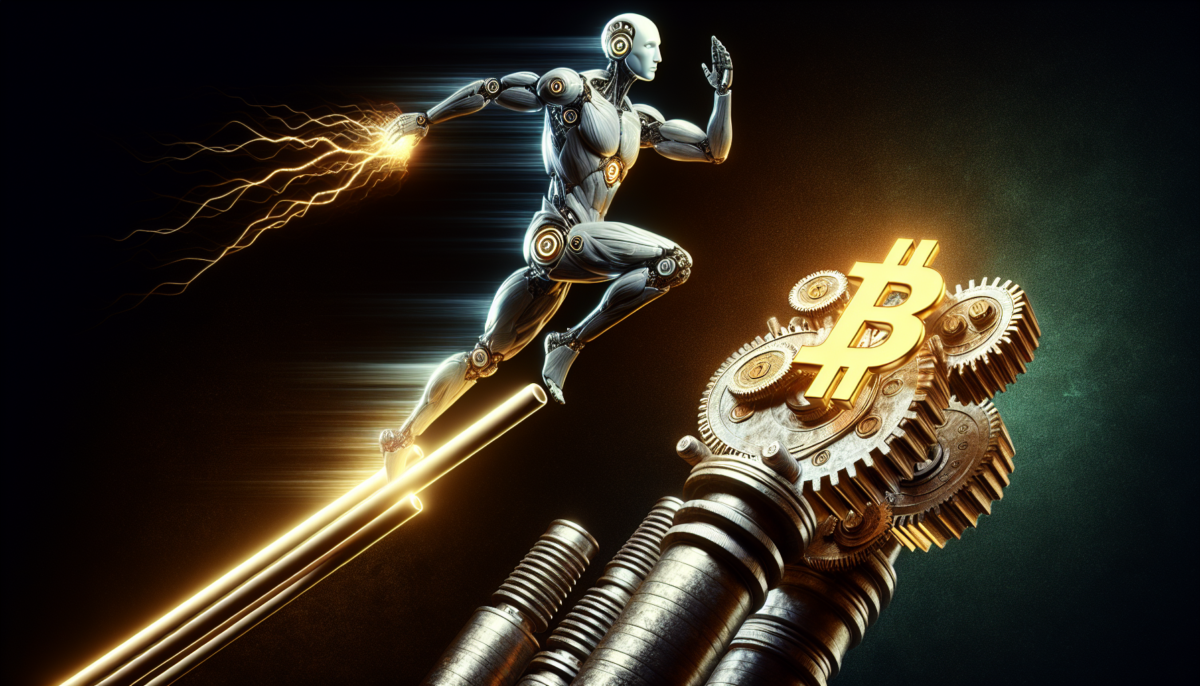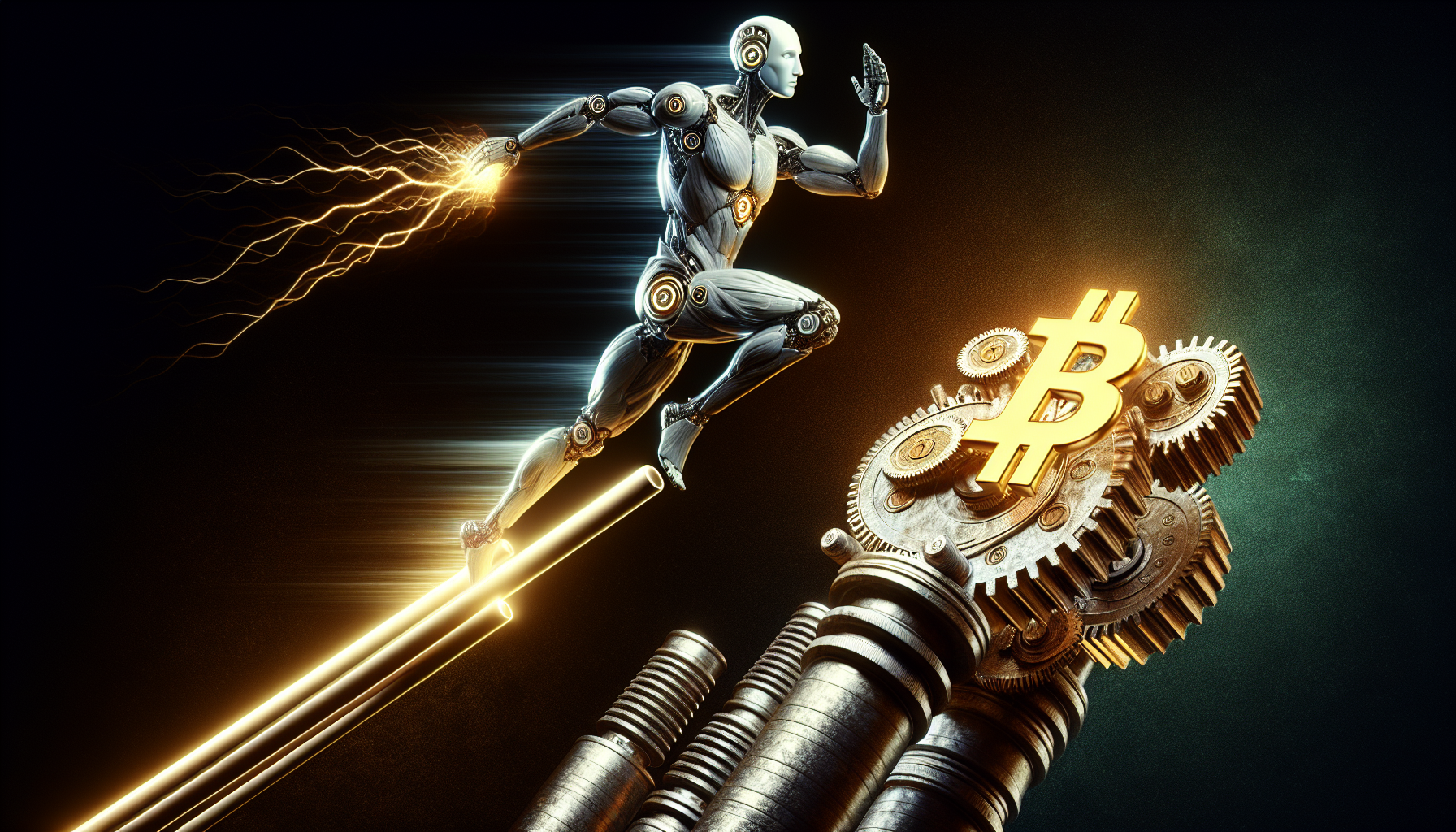AI’s Pursuit of US Energy Encounters Tough Rivalry from Bitcoin Mining
We independently review everything we recommend. When you buy through our links, we may earn a commission which is paid directly to our Australia-based writers, editors, and support staff. Thank you for your support!

Brief Overview
- American tech firms are competing for the electricity resources owned by bitcoin miners to power their AI and cloud computing data centres.
- By 2030, data centres in the US might consume as much as 9% of the nation’s electricity, effectively more than doubling their current demand.
- Bitcoin miners are shifting towards leasing or selling their energy-related infrastructure to major technology firms such as Amazon and Microsoft.
- Transforming bitcoin mining sites for AI and cloud computing can substantially enhance the value of these locations.
- The transition from bitcoin mining to AI data centres poses significant hurdles, including elevated costs and technological obstacles.
AI and Bitcoin Miners in Race for Limited US Energy Supply

Rising Electricity Demand
The United States is experiencing an extraordinary increase in electricity demand primarily fueled by the rapid growth of artificial intelligence (AI) and cloud computing data centres. The Electric Power Research Institute estimates that data centres could account for as much as 9% of total electricity generated in the US by the decade’s end. This represents more than double their current usage, signifying the most rapid increase in electricity demand since the early 2000s.
Conversely, cryptocurrency mining, which used to dominate the energy-driven computing environment, now makes up approximately 0.4% of global electricity consumption, according to the International Energy Agency. However, the widening gap between the electricity needs of AI data centres and crypto miners is pushing these industries into direct conflict over energy assets.
Bitcoin Miners Shift Towards AI and Cloud Solutions
With tech leaders like Amazon, Microsoft, and Google racing to secure energy for their expanding data centres, bitcoin miners find themselves in a distinctive position. Some are capitalizing on this situation by leasing or selling their energy-connected infrastructure to these tech corporations, while others are struggling to maintain their energy supply.
For example, Marathon Digital Holdings, the largest publicly traded bitcoin miner globally, reportedly showed interest in acquiring a nuclear-powered data centre owned by Talen Energy in Pennsylvania. Ultimately, Amazon, with its considerably larger market valuation, purchased the centre in a deal revealed in March, obtaining enough electricity to power nearly all households in New Mexico.
The transition from crypto mining to AI and cloud computing is becoming increasingly common among sizable bitcoin miners. TeraWulf, a bitcoin mining entity with a facility in upstate New York that can handle up to 770 megawatts (MW), has attracted interest from leading technology firms such as Amazon and Google. This trend accelerated in June when Core Scientific, a bitcoin miner emerging from bankruptcy, announced a considerable agreement to lease its energy-connected properties to Nvidia-backed CoreWeave, with deals projected to surpass US$6.7 billion (A$9.9 billion) over a 12-year period.
Obstacles in Transitioning to AI Data Centres
Despite the potential for considerable financial benefits, the shift from bitcoin mining to AI and cloud computing is not without its difficulties. Numerous bitcoin miners may lack a complete understanding of the challenges involved in creating and managing AI data centres. Zach Bradford, CEO of CleanSpark, pointed out that while bitcoin mines can be established in as little as six to 12 months, a sophisticated data centre might require up to three years to build.
Additionally, the technical demands for AI data centres, such as specialized cooling systems and other infrastructure, are significantly more rigorous than those for crypto mining. The high expenses related to these enhancements may be prohibitively expensive for many bitcoin miners, particularly those who faced capital restrictions following the 2022 bitcoin price downturn.
Sergii Gerasymovych, CEO of EZ Blockchain, underscored the challenges that smaller bitcoin miners encounter when competing with well-funded AI firms. For instance, EZ Blockchain was working on a 10-MW project with a utility in South Carolina until that utility contracted for 100 MW with a prominent AI company. These hyperscalers, which encompass the world’s top technology firms, operate extensive global networks of data centres and cloud infrastructure with billions of dollars readily available.
Conclusion
As American technology companies aggressively enhance their AI and cloud computing capabilities, they are increasingly vying with bitcoin miners for a diminishing electricity supply. Although some bitcoin miners are benefiting from this trend through leasing or selling their energy-connected assets, the transition to AI data centres faces numerous challenges, including high costs, lengthy construction periods, and technical intricacies. As the competition for energy escalates, significant transformations in both industries might unfold in the near future.
Q: Why are technology companies and bitcoin miners vying for electricity?
A:
Technology firms are rapidly advancing their AI and cloud computing data centres, which necessitate large quantities of electricity. Bitcoin miners, who also consume considerable energy, find themselves in competition with these tech giants for a limited electricity supply.
Q: What percentage of electricity could data centres utilize in the US by 2030?
A:
Data centres in the United States might consume as much as 9% of the nation’s electricity by 2030, more than doubling their current usage, as reported by the Electric Power Research Institute.
Q: How are some bitcoin miners adapting to this competitive environment?
A:
Many bitcoin miners are transitioning to lease or sell their energy-connected infrastructure to AI and cloud computing enterprises. This strategic shift can significantly enhance the worth of their facilities as these locations gain importance for tech companies seeking rapid growth.
Q: What hurdles do bitcoin miners face when relocating to AI data centres?
A:
Transitioning to AI data centres encompasses high expenses, extended construction timelines, and technical complexities such as the requirement for specialized cooling systems. Moreover, many bitcoin miners may lack the necessary capital and expertise to effectively navigate this transition.
Q: How are smaller bitcoin miners impacted by this trend?
A:
Smaller bitcoin miners might find it challenging to compete with well-capitalized AI firms, which possess the financial means to quickly secure substantial electricity supplies. This situation could compel smaller miners to exit the market or lead them to sell their assets to larger tech corporations.
Q: What is the potential increase in value for bitcoin mining properties converted for AI use?
A:
Repurposing bitcoin mining sites for AI and cloud computing could increase their value up to fivefold, based on analysis from Morgan Stanley, as these facilities become essential for tech enterprises aiming for rapid expansion.
Q: Are all bitcoin miners transitioning to AI or cloud computing?
A:
Not every bitcoin miner is making the shift to AI or cloud computing. Some, like CleanSpark, intend to continue focusing on cryptocurrency mining, citing the technical and financial complexities involved in moving towards AI data centres.
